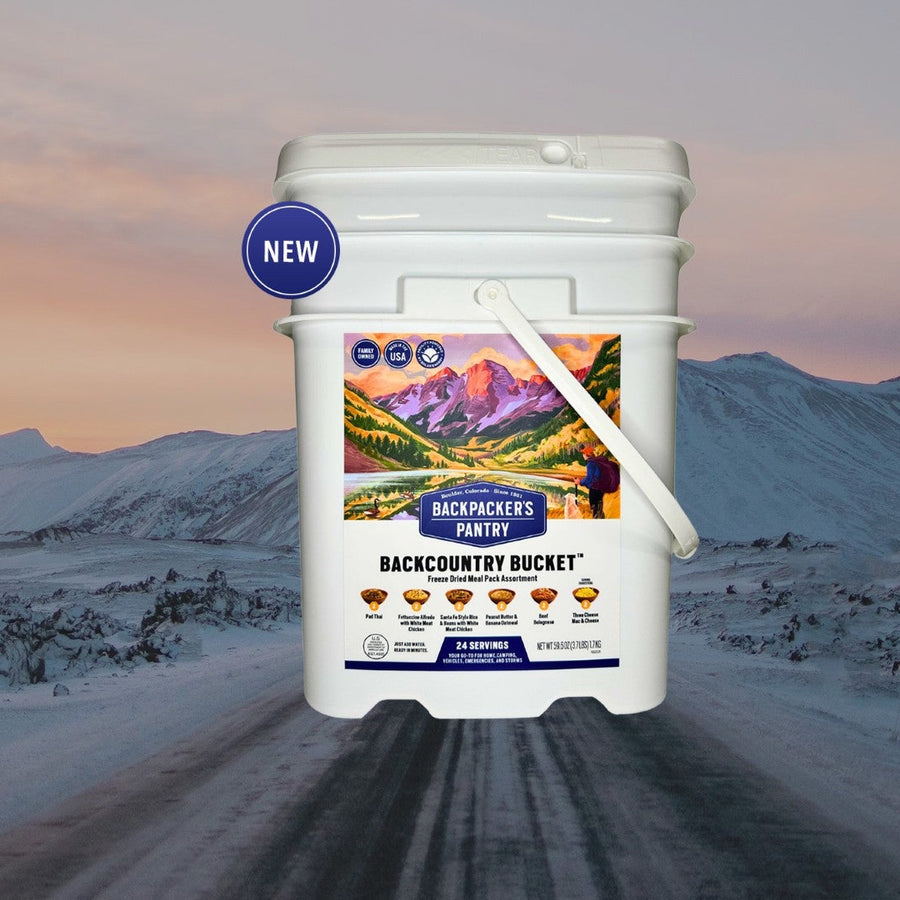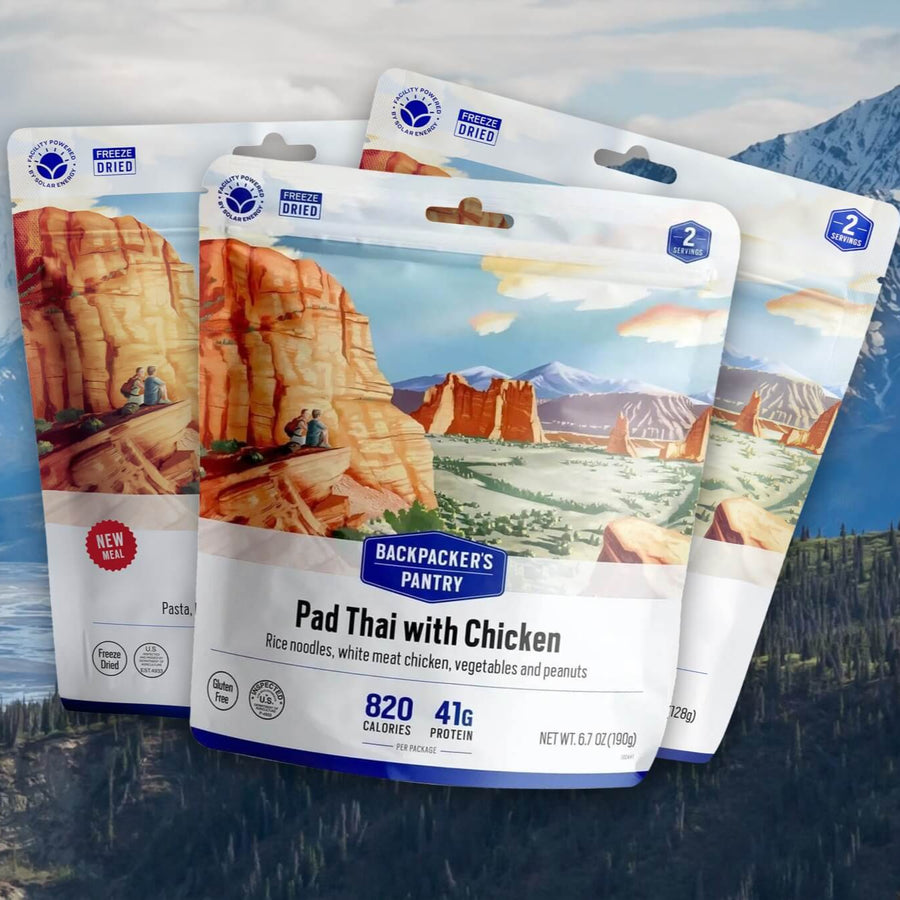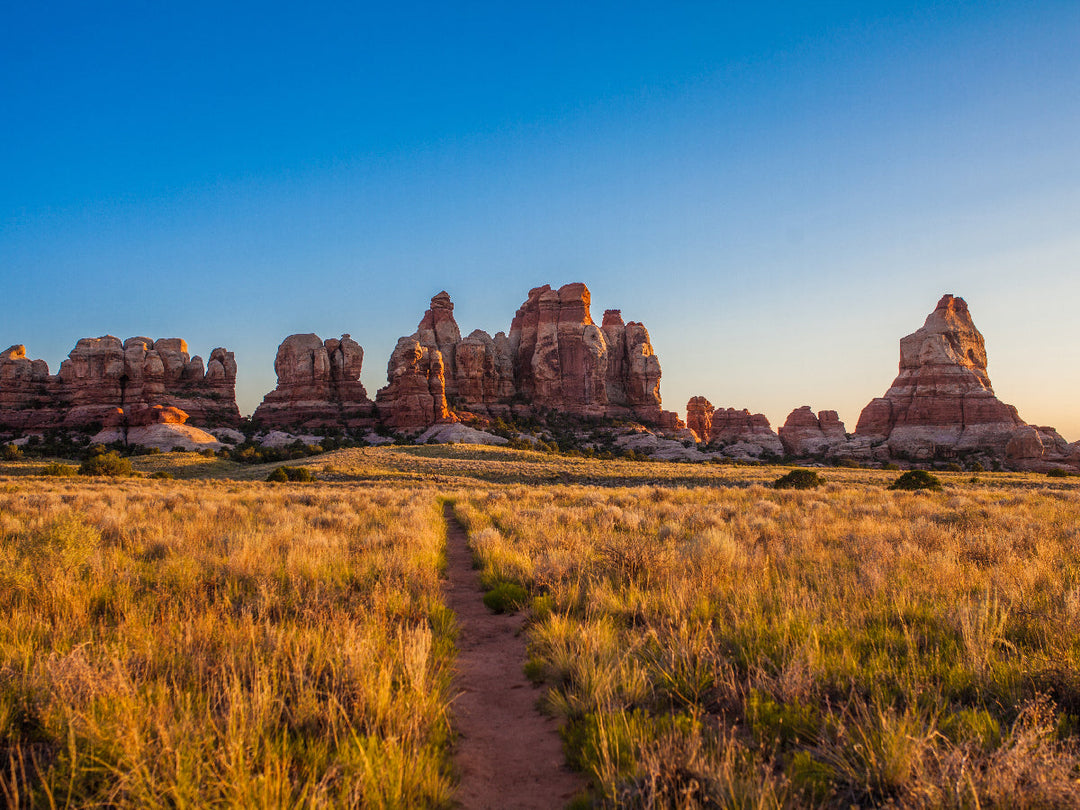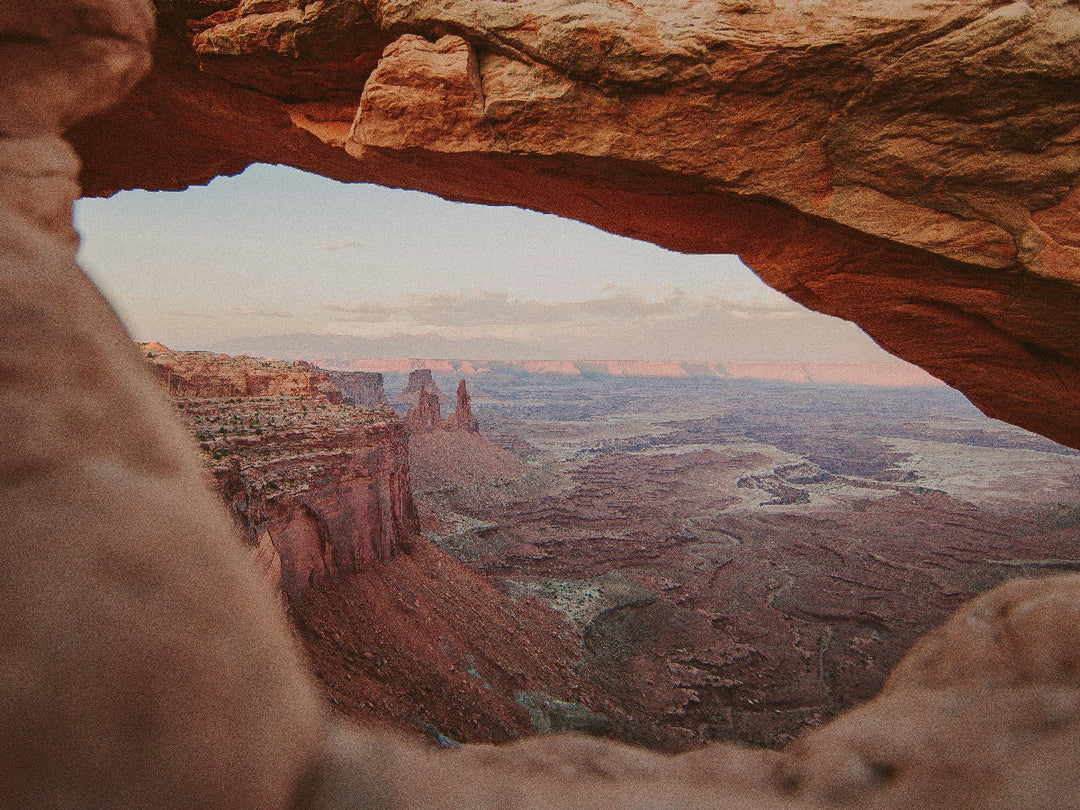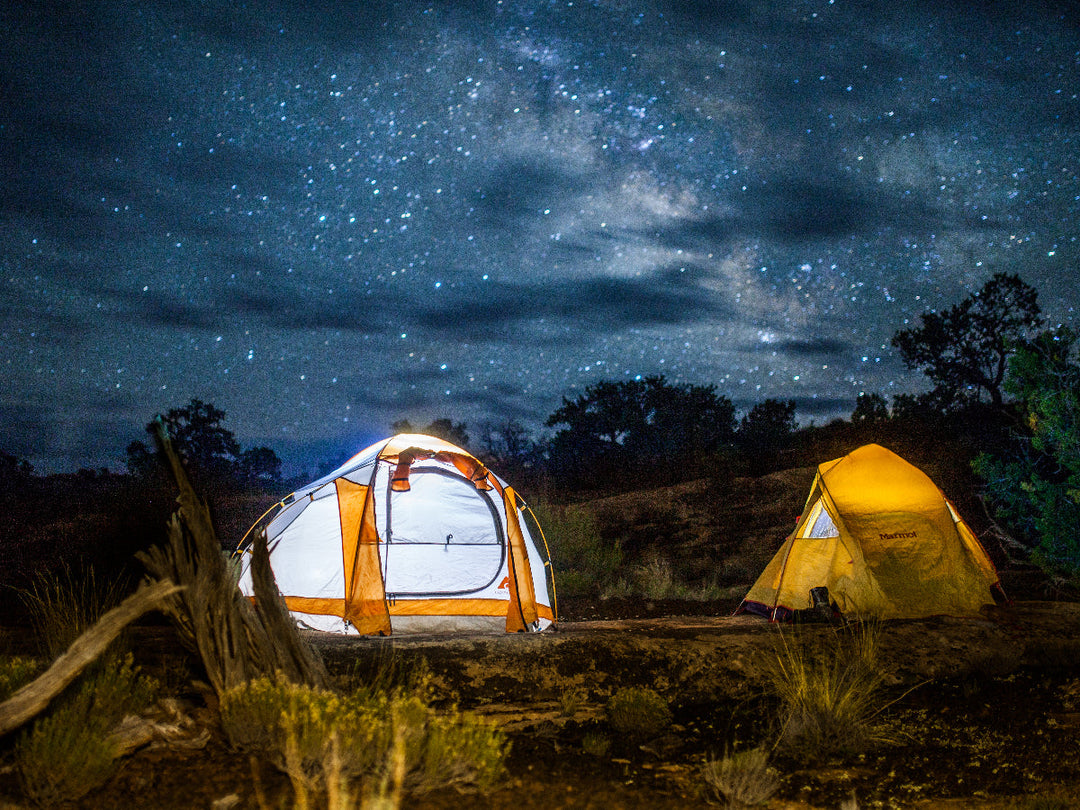Discover the Best Backpacking Trips in Canyonlands National Park
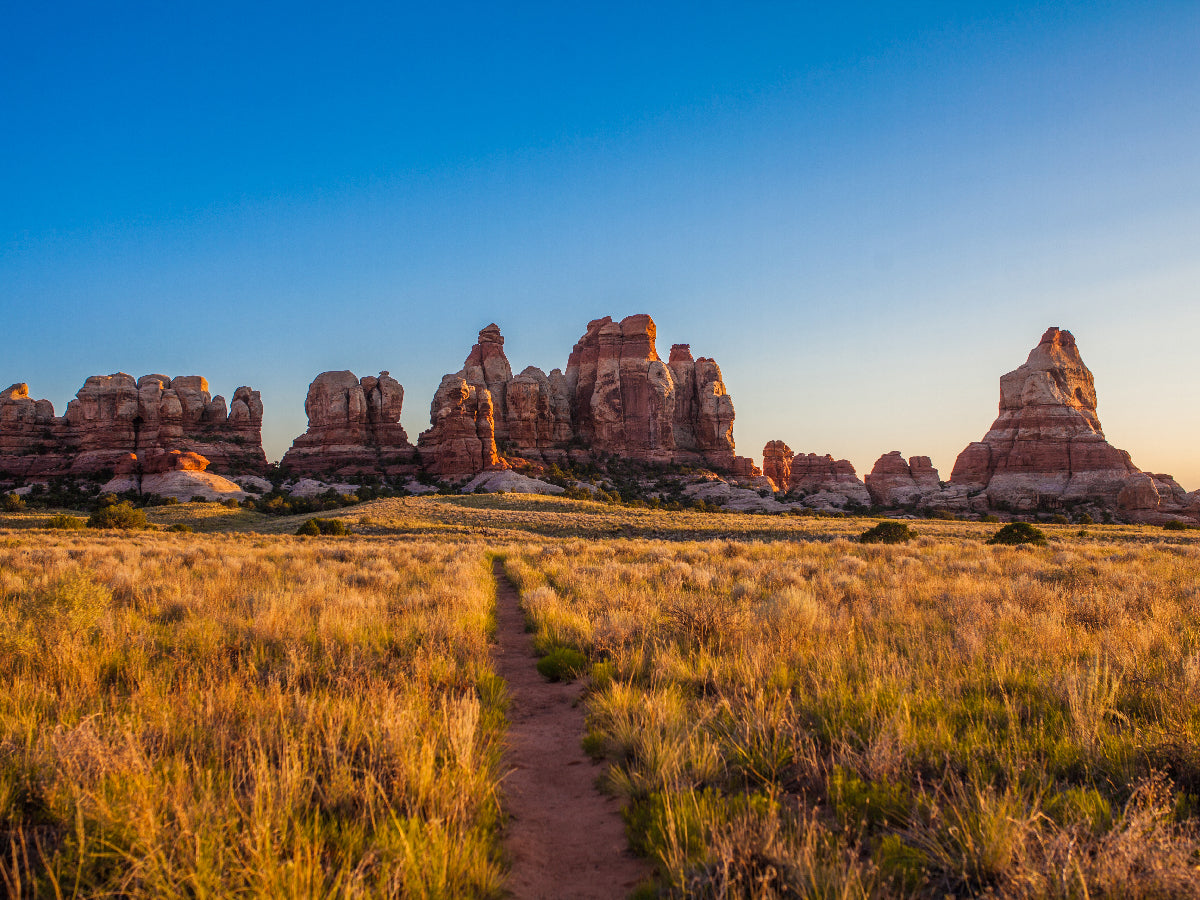
Driving through Canyonlands National Park is breathtaking - you’re flanked by impressive rock structures and soaring towers. But to really experience the park, you need to get up close and personal to the terrain. What look like monoliths of sandstone from the road are surprisingly complex and faceted when you’re close to them, punctuated by canyons, cracks, and prehistoric art. And they change as the day progresses, they’re painted with a soft glow as the sun rises, and their shadows move as the horizon turns before they reflect the technicolor sunset.
What we’re getting at is that the best way to experience Canyonlands is to hike out there and spend the night, or a few nights. Canyonlands is an incredible backpacking destination and deserves to be on your bucket list. But, the desert isn’t the most accommodating host, so we’ve put together this guide to help you choose a route that matches with your goals and make sure you’re prepared to backpack in Canyonlands.
Best Backpacking Routes by Distance
Canyonlands Overnight Backpacking Routes
Chesler Park Loop
This is a popular backpacking loop for a reason. It gets you a taste of all the best parts of Canyonlands, from slickrock to slot canyons, along with some incredible views. Make sure to follow the cairns and stay on trail.
Mileage and Elevation: 10.2 mi, 1,794’
Difficulty (out of 10): 3
Trailhead: Elephant Hill Trailhead
Season: October-May
Fees and Permits: $36 per site + $5 per person
Salt Flat and Big Spring Canyon Loop
If you’re looking for a shorter loop that’s great for beginners or kids, this is a great place to start. It’s not too challenging, but it still delivers an excellent experience with plenty of opportunities for exploration.
Mileage and Elevation: 7 mi, 659’
Difficulty (out of 10): 2
Trailhead: Salt Flat
Season: June-September
Fees and Permits: $36 per site + $5 per person
2-3 Night Routes
Druid Arch to Chesler Park
This backpacking loop might just have the coolest views of a rock formation in the park. Druid Arch is a must-see feature, and the rest of this loop is also scenic and incredible.
Mileage and Elevation: 14 mi, 2,445’
Difficulty (out of 10): 5
Trailhead: Chesler Park
Season: June-September
Fees and Permits: $36 per site + $5 per person
Wilhite Trail
This out and-back drops down to the canyon floor, before ascending back to the mesa and its views. It’s a good idea to bring a gps track of this route since on the return trip, routefinding can be difficult.
Mileage and Elevation: 11.2 mi, 2,011’
Difficulty (out of 10): 4
Trailhead: Wilhite
Season: June-September
Fees and Permits: $36 per site + $5 per person

Longer, 4+ Night, Canyonland Backpacking Trips
Druid Arch to Chesler Park via Salt Flat
If you’re looking for a bigger trip, this is it. You get all the views and experience of the typical Druid Arch experience, with a bunch of extra mileage in a beautiful part of the park. This is a big, challenging loop, for experienced backpackers.
Mileage and Elevation: 43.4 mi, 6,791’
Difficulty (out of 10): 6
Trailhead: Salt Flat
Season: June-September
Fees and Permits: $36 per site + $5 per person
Salt Creek and Horse Canyon
If you’re looking for mileage without large elevation gains, this is the hike for you. It winds through a historic section of the park, but never gets too steep. There are plenty of good campsites along the way.
Mileage and Elevation: 21.2 mi, 748’
Difficulty (out of 10): 5
Trailhead: Cave Spring
Season: June-September
Fees and Permits: $36 per site + $5 per person
Know before you go
Best Times to Backpack in Canyonlands National Park
Canyonlands is open for backpacking year-round, but spring and fall are your best bets for nights that aren’t too cold, and days that aren’t too hot. Some water sources in the park are seasonal, so if you visit in the summer you’ll need to carry all of your water with you, instead of counting on being able to purify water.
On the flipside, in the wintertime, snow and ice can make some routes hazardous. So when you’re backpacking in Canyonlands, you can visit anytime, but you’ll have an easier time if you show up during the shoulder seasons.
Weather
The temperatures in Canyonlands could be described as consistently inconsistent. It gets very cold at night, and very warm during the day, with temperature swings of =/- 40°F being very common. That means that you need to pack a warmer sleep system than usual, along with plenty of sunscreen and water.
When rare rainstorms do happen, the change is drastic, and flash flooding becomes a possibility. Keep an eye on the weather, and be ready to readjust your plans.

Hazards
There are three primary variables to look out for in Canyonlands: wildlife, weather, and route finding.
While bears are rare in the park, you still need to store your food safely so that smaller rodents don’t get to it. Similarly, you need to be aware of venomous scorpions, rattlesnakes, and spiders. They aren’t out to get you, but if you do disturb them, a bite can be fatal. Be aware, and try not to disturb nesting places.
In terms of weather, rainstorms come with flash flooding and the potential for lighting. Don’t ever try to cross running water when it’s raining, and if you hear thunder or see lightning, get to a safe place as quickly as possible. The desert is very exposed, and you could become a lighting strike victim very quickly.
Finally, route finding can be challenging in the desert. The scale of the rock formations can be deceiving, and there aren’t that many established waypoints. Always have a gps track of your route downloaded to your phone, and keep an eye out for cairns marking the trail.
What to Bring Backpacking in Canyonlands
Packing to backpack in Canyonlands is like packing for two trips at once. You pack cold-weather gear for mornings, nights, and evenings, and then all your hot weather sun protection for the daytime. This guide is a good place to start, just remember that you can never have too much sunscreen or water when you’re visiting the desert.
It’s a good idea to bring dedicated night clothing and footwear - down insulated jackets, pants, and booties help ward off the cold desert nights. Similarly, you’ll want a thicker sleeping bag and a warmer sleeping pad, if you want to get a good night’s sleep.
The navigational challenges of Canyonlands mean that your phone is even more valuable than usual, even though you probably won’t have cell service. So make sure you’ve got your camping apps downloaded ahead of time, and bring a small power bank or solar panel to keep your phone running.
Finally, backpacking in the desert usually includes fewer miles hiked, and more downtime at camp than other backpacking destinations. That means you’ve got an opportunity to lean into making delicious camp dinners, and making sure your morning coffee situation is dialled. The creature comforts hit different in this stark environment.
Finally, make sure to bring plenty of wag bags and toilet paper. You’ll need to carry out your own waste so be prepared with all the gear you’ll need.
Canyonlands Backpacking Permits and Regulations
There’s a $30 fee to enter the park, unless you’re visiting on some special holidays. You’ll also need a $36 backcountry permit, plus a $5 per person per night fee for camping access.
There are no fires allowed in the backcountry of the park, and the cryptobiotic desert soil is very delicate, so stay on established trails, or hard rock surfaces. Never hike or camp on the desert crust. Additionally, you must stay at least a mile away from roads, and 300 yards away from water and historic sites when choosing a backcountry campsite.
Part of the magic of Canyonlands is that it’s a bit of a choose-your-own-adventure park. There’s no one plan that works well for everyone. So do your own research, and find activities that make the most sense for your goals.
Finally, any solid waste must be collected and carried out. Leave no trace, on top of the soil, or under it. Bring wag bags, and know how to use them.
More Canyonlands Backpacking Routes to Consider
Murphy Trail
Washes, canyons and more
Mileage: 14 miles
Trailhead: Murphy Trail
Peekaboo Camp
Incredible rock formations
Mileage: 9.6 miles
Trailhead: Lost Canyon
Alcove Spring
Description: A seasonal river bed and intermittent spring
Mileage: 9.6 miles
Trailhead: Alcove Spring
Taylor Canyon Loop
Description: Sheer cliff walls and a tidy loop
Mileage: 19.3 miles
Trailhead: Taylor Canyon
Maze Overlook
Some of the best views in the park
Mileage: 8 miles
Trailhead: Maze Overlook
